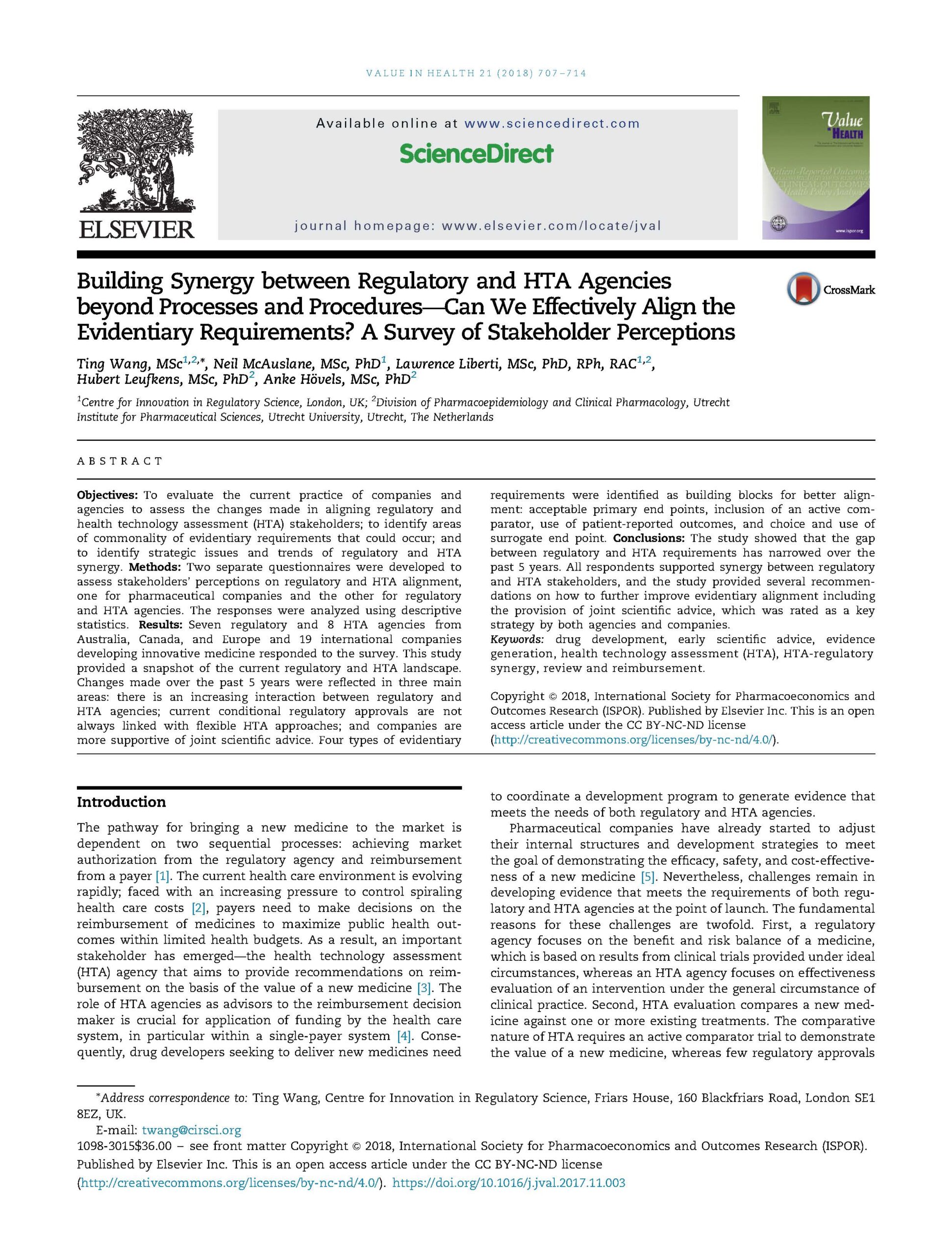Objectives: To evaluate the current practice of companies and agencies to assess the changes made in aligning regulatory and health technology assessment (HTA) stakeholders; to identify areas of commonality of evidentiary requirements that could occur; and to identify strategic issues and trends of regulatory and HTA synergy.
Methods: Two separate questionnaires were developed to assess stakeholders’ perceptions on regulatory and HTA alignment, one for pharmaceutical companies and the other for regulatory and HTA agencies. The responses were analyzed using descriptive statistics.
Results: Seven regulatory and eight HTA agencies from Australia, Canada, and Europe and 19 international companies developing innovative medicine responded to the survey. This study provided a snapshot of the current regulatory and HTA landscape. Changes made over the past 5 years were reflected in three main areas: there is an increasing interaction between regulatory and HTA agencies; current conditional regulatory approvals are not always linked with flexible HTA approaches; and companies are more supportive of joint scientific advice. Four types of evidentiary requirements were identified as building blocks for better alignment: acceptable primary end points, inclusion of an active comparator, use of patient-reported outcomes, and choice and use of surrogate end point.
Conclusions: The study showed that the gap between regulatory and HTA requirements has narrowed over the past 5 years. All respondents supported synergy between regulatory and HTA stakeholders, and the study provided several recommendations on how to further improve evidentiary alignment including the provision of joint scientific advice, which was rated as a key strategy by both agencies and companies.
Wang T, McAuslane N, Liberti L, Leufkens H, Hövels A. Building Synergy between Regulatory and HTA Agencies beyond Processes and Procedures-Can We Effectively Align the Evidentiary Requirements? A Survey of Stakeholder Perceptions. Value Health. 2018 Jun;21(6):707-714. doi: 10.1016/j.jval.2017.11.003

